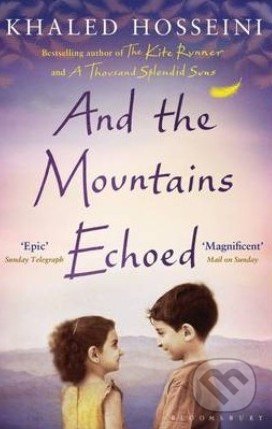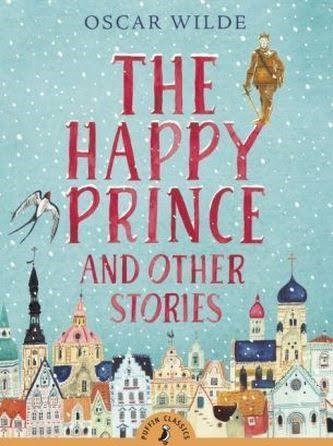
This project promotes open access materials and has been funded with support from the European Commission - Erasmus+ program. These materials reflect the views only of the author, and the Commission cannot be held responsible for any use which may be made of the information contained therein.
[Project Number: 2016-1-HR01-KA201-022159]
![]()
Author
George R. R. Martin

Bibliographic information
Publisher: Bantam; Reprint edition
ISBN: 978-0553386790
Links (adaptations, reviews, full texts etc.)
- https://www.amazon.com/Perks-Being-Wallflower-Stephen-Chbosky/dp/1451696191
- http://www.goodreads.com/book/show/22628.The_Perks_Of_Being_A_Wallflower
Theme
The conflicting demands of duty and love. The corrupt nature of politics.
Short summary
A Game of Thrones takes place over the course of one year on or near the fictional continent of Westeros. The story begins when King Robert visits the northern castle Winterfell to ask Ned Stark to be his right-hand assistant, or Hand of the King. Bran Stark falls while climbing around the castle and later on he is almost murdered by the queen. Robert rides with his two daughters to King´s landing. John Snow, Ned Stark´s bastard becomes a member of the Night´s Watch. Later on the King is killed and Ned Stark is accused of treason and is executed. Daenerys the previous king´s daughter marries Khal Drogo who promises to help her to get back the throne. But he is wounded and after using blood magic on him Drogo is alive but brain dead. Daenerys sets a funeral pyre to burn Drogo. Daenerys also places the three dragon eggs into the pyre. As the fire burns, Daenerys walks into it, and when finally it clears, she appears with three newborn dragons at her breast.
Why is the story appropriate for the targeted groups of RSP readers?
- It reflects readers interests
- It’s highly motivational
- reflects political/historical moment
- recommendations and the report emerged from the survey results
What are the distinguished readers interests reflected by this book/story?
-
Why is this story motivational for the pupils?
The story is made into a series which is very popular among the teenagers the story is a fantasy story but on the other hand it is a historical story as well. The story is about courage, strength but as well about the importance of family relationships.
Is there a historical, political, multi/inter cultural, migrant or similar context recognized in this book/story?
The story is a description of the political situation and the power. The story is a historical story and describes the lives of royal families and the lives of their subjects.
Is there a principle of inclusion reflected in this book/story and does it promotes understanding of cultural diversities and heritage?
Even if the story is based on a fantasy world it still introduces different cultures and their traditions and habit, it shows how we insist on our family bonds and how much do people want to preserve their traditions.
Title of Activity
And the mountains echoed
Description of educational activity
Duration: 90 minutes
Pupils’ age: 15-19
Organization of the class of pupils: group work
The aim of the lesson: The aim of the activity is to develop reading literacy of pupils, to support their reading skills, to use their competencies to analyse and compare source texts, to reinforce their language skills when verbalizing their findings, to develop their vocabulary. The ability to present their findings, their opinions and the ability to accept opinions of the other members of the group are important here.
The aim of the activity is to be able to understand the chosen excerpts from the book, to understand the nature and depth of the excerpts from the book. To be able to find connections between the book and the real world. To be able to analyse and accept multicultural differences between the countries. One of the aims is to improve the analytical thinking of our students and to support the tolerance of other cultures and nations.
Support materials: The excerpts which show a personality of characters or socio-political situation are appropriate. Because the story takes place in Afghanistan, a few questions about a current situation in the country can be prepared. It is advisable to prepare some information about the author of the book.
- First excerpt: page 38 - 48
(Abdullah had never been to Kabul.(...) You´ve not seen the likes of it, you two.)
- Second excerpt: 1-18
(So, then. You want a story and I will tell you one. (...) We ´ll say our good-byes in the morning.)
- Third excerpt: 50 - 51
(Mrs. Wahdati looked down at Abdullah.(...) Her face shining with happiness.)
The second excerpt can be shortened, and some of the less important parts can be cut out. It depends on the lengths of time the teachers have for this activity.
Activities:
- The author and the book are introduced. The texts are handed out.
- The first excerpt is read out loud.
- The students compare the social classes mentioned in the text. They should describe the differences. Compare their living conditions. The aim is to work out characteristics of the characters mentioned in the excerpts. They have to find key words which characterise the characters and to think about relationships between them and define them.
- The students should write down as many adjectives as they can describe Mr. Wahdati, Mrs. Wahdati and Nab. Their task is to describe the behaviour of Pari and Abdullah. They explain what was unusual about the photo of Mrs. Wahdati and the man? How did they feel when Mrs. Wahdati visited them 2 years ago?
- The following task is to read the second excerpt and complete an internal monologue of Abdullah. The students are divided into groups and they work in teams. What did he think about Mrs. Wahdati?
- After working with the second excerpt each group presents their outputs.
- Each student gets the third excerpt and they read this introduction story. After reading the story the task of the students is to find connection between this story and the first excerpt. They have to find out why Abdullah was upset with Mrs. Wahdati.
- After reading and finding the reasons the students again work in groups and each group gets a poster with a hat. Their task is to analyse the excerpt from different points of views. Each group is given a different task, A0 piece of paper and colourful markers. The results of their findings are written down on the pieces of paper: There are six different hats, each hat has its role. The method of six thinking hats is used.
The White Hat calls for information known or needed. "The facts, just the facts." The Yellow Hat symbolizes brightness and optimism. Under this hat you explore the positives and probe for value and benefit.
The Black Hat is judgment - the devil's advocate or why something may not work. Spot the difficulties and dangers; where things might go wrong. Probably the most powerful and useful of the Hats but a problem if overused.
The Red Hat signifies feelings, hunches and intuition. When using this hat you can express emotions and feelings and share fears, likes, dislikes, loves, and hates.
The Green Hat focuses on creativity; the possibilities, alternatives, and new ideas. It's an opportunity to express new concepts and new perceptions.
The Blue Hat is used to manage the thinking process. It's the control mechanism that ensures the Six Thinking Hats® guidelines are observed
- After the time limit the individual groups present their results. Students can ask the present group questions or they can add some information. In the end a teachers sums up all the findings.
Connection to curriculum
Grade: 3rd and 4th grade of bilingual studies
Bilingual curriculum: The study of literature is focused during their third and fourth year on reading comprehension of literary texts which are more serious and are dealing with deeper ideas, e.g. multiculturalism, intolerance, differences between social classes. The students should be able to understand the influence of the author´s cultural background on the story. The aim of the curriculum is to teach students to work with the text, to analyse the texts and to understand the importance of the cultural and historical backgrounds. Understanding texts, weighing their merits, and utilizing the information they offer are skills that teenagers draw on throughout the curriculum.
Knowledge:
- Students make judgments and decisions
- Students compare and contrast
- Students understand a text being read.
- Students find characters in the text and they differentiate supporting characters from the main character.
- After reading the excerpts they can identify the main characteristics of the characters.
- They preview and predict
- They identify the topic of the excerpts.
- They select information.
Skills:
- Students offer observations, make connections, speculate, interpret, and raise questions in response to texts
- Students analyse texts.
- They work with different sources of information.
- They search for and classify information.
- They can identify and interpret correctly the feelings of the characters in the books
- They can put the particular excerpts in the correct order according to some links.
- They are able to work in groups.
- They can create a characteristic of a character based on the excerpts.
- They can complete the tasks successfully
Competences:
- They can compare experiences of characters across cultures
- They can identify and interpret correctly the feelings of the characters in the books
- They can make a descriptive writing
- They can make a personal narrative
- They are able to work in groups and individually, too.
- They can accept other members of the group
- They accept and understand the cultural differences between the nations and cultures
- They can understand the emotions of the characters, they are emphatic.
Bibliographic reference to be used during the activity
Khaled Hosseini
And the mountains echoed
The Publisher: Bloomsbury
ISBN: 9781408850053
Page count: 480
Year of issue: 2014

Digital sources
A number of adaptations were created following publication.
- https://www.theguardian.com/books/2013/may/26/mountains-echoed-khaled-hosseini-review
- https://www.facebook.com/KhaledHosseini/?fref=ts
- https://www.facebook.com/andthemountainsechoedkhaledhosseini/?fref=ts
Results
The expected outcomes of the lesson are:
- The students will be able to understand through different cultures, they will be able to compare cultures, cultural elements, traditions and hence they will be able to understand the text from different perspectives.
- The ability to develop demonstrations will be enhanced.
- To connect ideas and themes across texts.
- To offer observations, make connections, speculate, interpret, and raise questions in response to the excerpts.
Recommendations
Both the teaching method and the text can help in increasing students’ interest in reading. This text promotes more characters but from a different cultures and they belong to different social classes.
The teacher monitors the students so as to make sure they cooperate effectively.
The volume of given fragments of books can be adapted to the
potential of a group - fragments can be shorter - by cutting less important paragraphs, or be expanded to additional fragments of the same novel.
Book title
And the mountains echoed
Author
Khaled Hosseini

Bibliographic information
Publisher: Riverhead Books
ISBN-13: 978-1594632389
Links (adaptations, reviews, full texts etc.)
- http://www.goodreads.com/book/show/16115612-and-the-mountains-echoed
- http://www.telegraph.co.uk/culture/books/10069515/And-The-Mountains-Echoed-by-Khaled-Hosseini-review.html
Theme
Family Ties and Roots. Sacrifice. Duty and Morality.
Short summary
This story mainly focuses on one family, although it spans a few generations and branches out to other lives that are involved. The ties that bind this family together are at times loose and disconnected or are wound so tightly, that it can, in extreme cases, be the bond that smothers. However, there are several other key players involved with the main family that are not “blood” related but adopt family member roles and, in some cases, become more “family” than blood relatives. Conversely, in the case of Nila, a family bond with her “acquired” daughter, Pari, is tenuous, suggesting that family connections cannot be forced, either. It is the strength of Pari’s connection with her estranged brother that haunts her life as she feels a strong void within her although she never really understands why. It is only in their reuniting near the end of the book, where their family story feels accomplished.
Why is the story appropriate for the targeted groups of RSP readers?
- It reflects readers´ interests
- It is highly motivational
- It reflects political/historical moment
- Recommendations and the report emerged from the survey results
- Refers to actual migrant situation
What are the distinguished readers interests reflected by this book/story?
-
Why is this story motivational for the pupils?
The story describes the problems of immigrants. This motif coincides mostly with family ties, and thus, the morality of the amount of obligation people have to each other becomes even more difficult.
Is there a historical, political, multi/inter cultural, migrant or similar context recognized in this book/story?
The eight stories are based on the story of Abdullah who has lost his sister, each chapter has a hidden moral. They describe different social classes and family bonds.
Is there a principle of inclusion reflected in this book/story and does it promotes understanding of cultural diversities and heritage?
The difficulties between step parents and children are depicted and the importance of cultural heritage.
Title of Activity
The Selfish Giant
Description of educational activity
Duration: 90 minutes
Pupils’ age: 15-19
Organization of the class of pupils: individual work
The aim of the lesson: The aim of the lesson is to improve the reading literacy of the students. To improve their fantasy and imagination and learn the main features of three genres – horror, sci-fi, love story. Another goal is to learn about problems and their reasons between groups of people in different parts of the world.
Support materials: The text of the story. Pictures of different walls.
Activities:
- Dictogloss (garden description - 1st and 2nd paragraphs).
- Reading the original description. What kind of story could happen in this garden?
- Students choose one of the genres and rewrite the paragraphs in order to match the description of the garden to the genre: a) horror / b) sci-fi / c) love story
- Read the story. What is the main idea of the story? What is the saddest thing about the story? When does one feel like the giant?
- What could a wall symbolize in our lives?
- Look at the pictures and try to guess where the walls were/are and why they were built.
Evaluation and assessment method:
- Teacher makes sure that all the students are involved in the discussions and complete all their tasks.
- The students are also asked to write their own description of the garden matching the style of a specific genre.
Effect of the activity on RSP reading:
Practices that support students´ imagination and fantasy followed by the real historical and current affairs.
Connection to curriculum
Grade: 1 – 4 grade of secondary studies
Curriculum: The study of literature is focused on reading and comprehending literary texts of historical and cultural importance and relevancy either in the world or Czech literature. Students are taught to work with texts and information in different ways, to adopt the processes of analysis, synthesis, induction, deduction, generalization, abstraction, specification, comparison, organization, selection. The students should be able to interpret, summarize and evaluate the texts.
Knowledge:
- Develop reading fluency
- Improve reading comprehension
- Rich vocabulary describing a place
Skills:
- Use illustrations
- Distinguish reality and fantasy
- Make predictions
- Compare and contrast
- Discuss questions in a bigger group
Competences:
- Make connections between fiction and real life or personal experiences
- Be able to visualise material read
- Follow specific instructions and conventions
- Evaluate evidence
- Support and justify an opinion
Bibliographic reference to be used during the activity
Oscar Wilde
The Happy Prince and Other Stories
Publisher: Penguin Books
ISBN: 0140621377
Page count: 224
Year of issue: 1994

Digital sources
A short animated adaptation of the story: https://www.youtube.com/watch?v=btNVUWikg7M
Results
The expected outcomes of the lesson are:
- The students will be able to create a description of a place.
- To recognize the main features of the basic genres.
- To arouse interest in history and current affairs.
Recommendations
Both the teaching method and the text can help in increasing students’ interest in reading. The text is a classic fairy-tale with imaginative descriptions and a fantastic main character. The teacher monitors the students so as to make sure they cooperate effectively.
Contact
X gimnazija ''Ivan Supek''
Ul. Vjekoslava Klaića 7
10000
Zagreb
E-mail: partners@handbook4rspreaders.org










